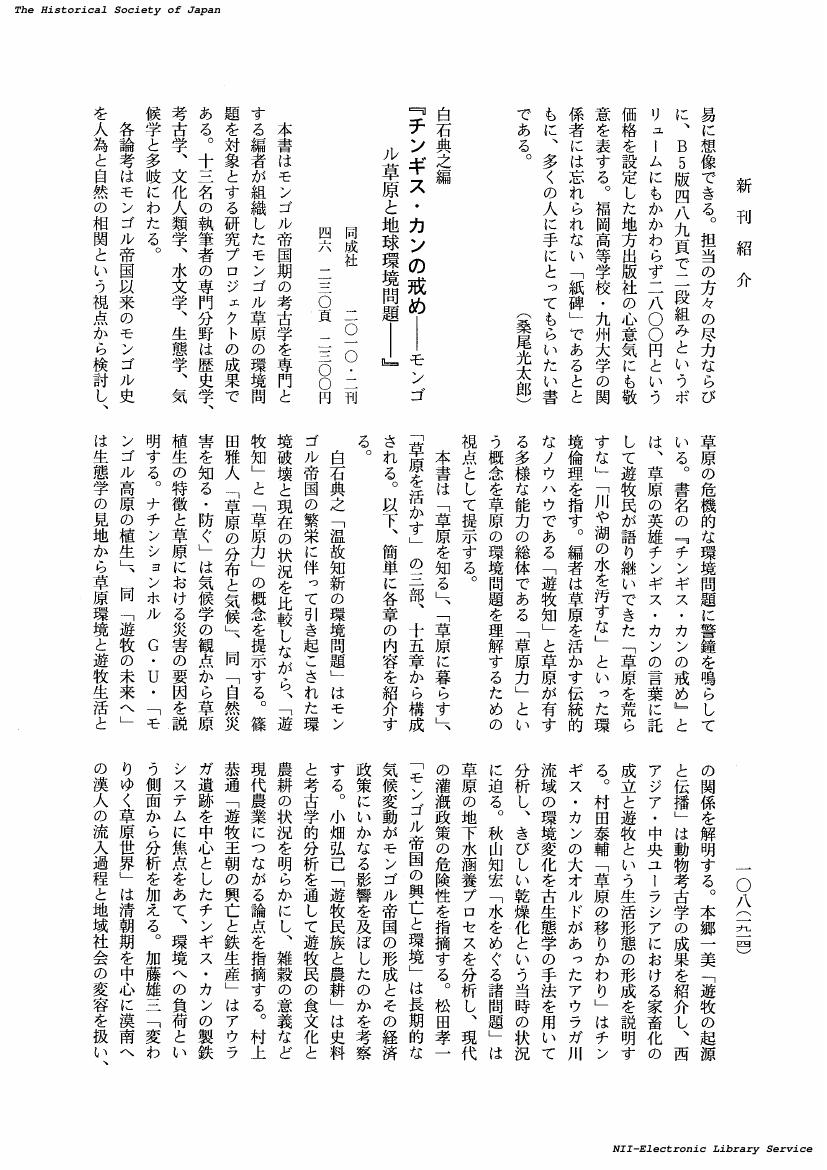- 著者
- 植田 暁
- 出版者
- 内陸アジア史学会
- 雑誌
- 内陸アジア史研究 (ISSN:09118993)
- 巻号頁・発行日
- vol.30, pp.89-90, 2015-03-31 (Released:2017-10-10)
- 著者
- 植田 暁
- 出版者
- 内陸アジア史学会
- 雑誌
- 内陸アジア史研究 (ISSN:09118993)
- 巻号頁・発行日
- vol.28, pp.101-126, 2013-03-31 (Released:2017-10-10)
The purpose of this study is to explain socio-economic changes among Kyrgyz nomads from the 19^<th> to early 20^<th> century. Using geographic information system analysis, settled ethnic groups in Ferghana Province were classified into two groups according to the agricultural management pattern: Uzbeks, Sarts, and Kipchaks, who were engaged in intensive cotton monoculture on irrigated land in the Ferghana valley, and Tajiks and Kyrgyz, who were engaged in grain production and pasturage in the foothills. Under Russian rule cotton production in the Valley made rapid growth for the country's textile industry. Kyrgyz nomads were originally engaged in both agriculture and pasturage in the foothills of the Tian Shan before the Russian conquest of Central Asia. In Ferghana Province, due to the progress of cotton monoculture, the price of grain increased rapidly under Russian rule. This situation forced nomads to increase their grain yields. However, water resources were limited in the foothills. As a result, nomads expanded extensive rain-fed cultivation while maintaining a certain amount of livestock to sell in the market for cash. Sowing in the spring made the coexistence of nomadism and agriculture possible. The unstable rain-fed cultivation was supported by extra income from the economic exchange with settled people, such as selling livestock, seasonal employment in the cotton fields, etc. Nomads' survival strategy of adjusting to the drastic economic changes that occurred in Ferghana Province, was pursued under conditions of adapting to the local natural environment and interacting with other ethnic groups in the region.
- 著者
- 植田 暁
- 出版者
- 公益財団法人 史学会
- 雑誌
- 史学雑誌 (ISSN:00182478)
- 巻号頁・発行日
- vol.119, no.11, pp.1914-1915, 2010-11-20 (Released:2017-12-01)
1 0 0 0 OA イスラエルポスドク体験記
- 著者
- 植田 暁子
- 出版者
- 公益社団法人 日本表面科学会
- 雑誌
- 表面科学 (ISSN:03885321)
- 巻号頁・発行日
- vol.33, no.4, pp.247-248, 2012-04-10 (Released:2012-04-22)
- 参考文献数
- 2
1 0 0 0 フェルガナ地方における綿花栽培の復興 1917~1929年
- 著者
- 植田 暁
- 出版者
- 社会経済史学会 ; 1931-
- 雑誌
- 社会経済史学 = Socio-economic history (ISSN:00380113)
- 巻号頁・発行日
- vol.82, no.2, pp.219-240, 2016
1 0 0 0 フェルガナ地方における綿花栽培の復興 1917~1929年
- 著者
- 植田 暁
- 出版者
- 社会経済史学会
- 雑誌
- 社会経済史学 (ISSN:00380113)
- 巻号頁・発行日
- vol.82, no.2, pp.219-240, 2016


